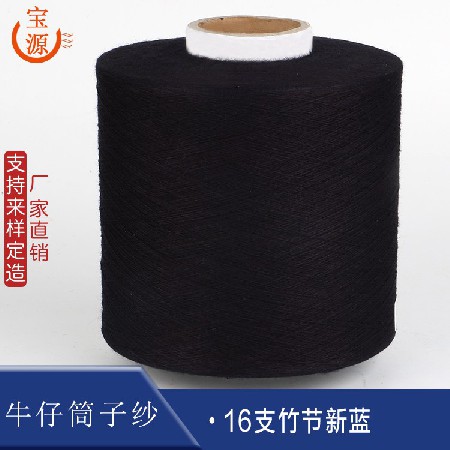Elastic denim manufacturer: what is the sizing and dyeing process of denim
The technological process of denim is different from that of other general cotton fabrics. It is usually produced in professional factories. Typical denim fabrics are made of dyed warp yarns and white weft yarns.
Generally speaking, denim fabric production can be divided into dyeing and sizing joint production line, rope dyeing production line and axial warp circulation dyeing and sizing production line. In these production processes, Z is more used in the sizing and dyeing joint production line.
Winding: winding the cylindrical bobbin into a conical bobbin is beneficial to the unwinding of the warping machine. At the same time, the electronic yarn cleaner can eliminate the yarn defects, improve the cotton yarn evenness quality and reduce the end breakage in the later process.
Winding the cylindrical bobbin into a conical bobbin is beneficial to the unwinding of the warping machine. At the same time, the electronic yarn cleaner can eliminate the yarn defects, improve the cotton yarn evenness quality and reduce the end breakage in the later process.
Warping: The package yarn is wound onto the light axis. Generally, the number of warp axes (head portion) is 350~500. Ten or so warp axes are assembled into a cylinder for sizing and dyeing. Generally, the total number of warp yarns in a cylinder of denim is 4000.
The package yarn is wound onto the light axis. Generally, the number of warp axes (head portion) is 350~500. Ten or so warp axes are assembled into a cylinder for sizing and dyeing. Generally, the total number of warp yarns in a cylinder of denim is 4000.
Sizing and dyeing: The finished warp is cleaned, pretreated, indigo dyed, cleaned, dried, and sized by using the production line of dyeing and sizing machine or ball warp dyeing and sizing production line.

Warp threading: after the completion of the sizing, dyeing and weaving, the warp yarn is threaded one by one onto the stop piece and the heald, and then the warp yarn is woven.
Weaving: The warp and weft yarns are interlaced into cloth on the loom.
Yarding cloth: The cloth rolls dropped from the loom are stacked into cloth piles for easy inspection and repair, and the yarding length is calculated.
Singing: After stitching the inspected cloth head and tail, the surface hairiness will be burned off by the singeing machine to make the cloth smooth and clean, and increase the appearance quality.
Skewing: pull the singed cloth in a diagonal direction through the diagonal rod to avoid twisting seams after the denim is made into clothes.
Pre-shrinking: hold the denim by the rubber blanket, and compress it mechanically to shorten the warp and weft direction in advance, reduce the cost shrinkage rate, and ensure the stability of clothing scale. Denim is dried after preshrinking, and then wrapped with rolled cloth.
Article source: elastic denim manufacturer mkiller.cn
-
10-15
Knitted denim factory: weaving process of knitted denim
Weaving technology of knitted jeansThe application of knitted jeans in life can be said to be many, and the advantages of knitted jeans are also many, so it has been widely used in the clothing indust
-
07-08
The knitting denim factory introduces the washing methods and types
1. General washing means general washing. It's just to change the washing we know about everyday to mechanization. The water temperature is about 60 ° - 90 ° C, and a certain amount of detergent
-
04-08
Characteristics of coated denim
Coated denim refers to a kind of post-processing product of denim, which is evenly coated with macromolecular compounds that can form a film on the surface of denim to change the appearance, style or
-
03-04
The reason why elastic jeans have elasticity
Now we all love beauty and attach importance to the maintenance of body shape. Many people will choose some elastic clothes to highlight the curve when they have attractive body shape. Elastic jeans h
